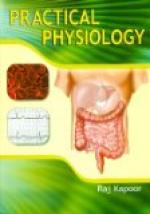The pancreas lies behind the stomach, across the body, from right to left, with its large head embraced in the horseshoe bend of the duodenum. It closely resembles the salivary glands in structure, with its main duct running from one end to the other. This duct at last enters the duodenum in company with the common bile duct.
The pancreatic juice, the most powerful in the body, is clear, somewhat viscid, fluid. It has a decided alkaline reaction and is not unlike saliva in many respects. Combined with the bile, this juice acts upon the large drops of fat which pass from the stomach into the duodenum and emulsifies them. This process consists partly in producing a fine subdivision of the particles of fat, called an emulsion, and partly in a chemical decomposition by which a kind of soap is formed. In this way the oils and fats are divided into particles sufficiently minute to permit of their being absorbed into the blood.
Again, this most important digestive fluid produces on starch an action similar to that of saliva, but much more powerful. During its short stay in the mouth, very little starch is changed into sugar, and in the stomach, as we have seen, the action of the saliva is arrested. Now, the pancreatic juice takes up the work in the small intestine and changes the greater part of the starch into sugar. Nor is this all, for it also acts powerfully upon the proteids not acted upon in the stomach, and changes them into peptones that do not differ materially from those resulting from gastric digestion. The remarkable power which the pancreatic juice possesses of acting on all the food-stuffs appears to be due mainly to the presence of a specific element or ferment, known as trypsin.
Experiment 60. To show the action of pancreatic juice upon oils or fats. Put two grains of Fairchild’s extract of pancreas into a four-ounce bottle. Add half a teaspoonful of warm water, and shake well for a few minutes; then add a tablespoonful of cod liver oil; shake vigorously.
A creamy, opaque mixture of the oil and water, called an emulsion, will result. This will gradually separate upon standing, the pancreatic extract settling in the water at the bottom. When shaken it will again form an emulsion.
Experiment 61. To show the action of pancreatic juice on starch. Put two tablespoonfuls of smooth starch paste into a goblet, and while still so warm as just to be borne by the mouth, stir into it two grains of the extract of pancreas. The starch paste will rapidly become thinner, and gradually change into soluble starch, in a perfectly fluid solution. Within a few minutes some of the starch is converted through intermediary stages into maltose. Use the Fehling test for sugar.
152. Digestion in the Small Intestines. After digestion in the stomach has been going on for some time, successive portions of the semi-digested




